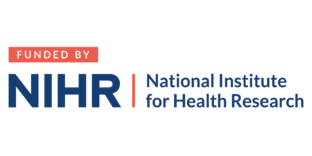Empathy in palliative care – more than rapport building
Inevitably, healthcare professionals and patients have different perspectives on illness. For the patient, illness is something that must be lived with, minute-by-minute, day-by-day. They have a deep experiential knowledge of their condition, whether or not they understand the biomedical mechanisms underlying it. Healthcare practitioners, on the other hand, are well-versed in these mechanisms, but unlikely (except for common conditions such as the ’flu etc.) to have first-hand experience of living with illness. This gap between experience and expertise is particularly wide in palliative care, where patients are living with terminal conditions that the professional will not themselves have experienced. Generally, this gap doesn’t interfere with care: the professional doesn’t need to have in-depth personal experience of what the patient is dealing with in order to provide good care for their symptoms, and the patient can communicate their symptoms without knowing their medical bases.
But there are moments when the patient’s experiential knowledge clashes in some way with the professional’s expertise. We have looked at such clashes across 37 video/audio recorded hospice consultations to help us understand how experienced palliative care professionals use empathy (by which we mean: an expressed understanding of the patient’s experience) to ‘bridge the gap’ between their and the patient’s perspective.
Findings
We found four broad circumstances where clashes occurred. In all, the professionals found ways to recognise the patient’s perspective whilst continuing to offer their medical perspective. Because we studied doctors’ consultations for this paper, we will refer to doctors from hereon. But there are good reasons to assume that other experienced staff work with empathy in similar ways.
1. Patient septicism about the medical perspective
In the recordings, doctors sometimes offered advice or opinions that were medically speaking sound, but which patients indicated were unwelcome because they didn’t match or take into account their experiences. In one striking example, a woman suffering from a chronic respiratory disease tells of being advised by a different doctor to “go exercising”—and that she found this offensive because it failed to recognise how difficult this was for her. The doctor was able, having listened to the patient’s complaint, to reissue the same advice while building in empathic statements that acknowledged the difficulty (e.g. “I know that’s hard and I know you have lots of other stuff going on as well”). Importantly, the doctor stuck to the medically valid advice. The empathic delivery of it, though, led to the patient receiving it far more positively than she had before.
2. Patient expectations about treatment
Patients sometimes expressed wishes for treatment that went beyond what could realistically or appropriately be provided. For instance, a man with terminal cancer said he would rather go into hospital than be at home or at the hospice at the end of his life. He explained that he believed the hospital could provide life-extending treatment while the other options would mean giving up. This presented a dilemma for the doctor: his expertise meant he knew the hospital could not provide life-extending treatment for this patient. So the patient would be making a very important decision based on a misconception. He could end up dying in an unpleasant hospital environment because of this. But it was also clear that his wish to go to the hospital was motivated by legitimate fears: about giving up and about dying. When he came to present the medical perspective, the doctor simultaneously acknowledged the patient’s emotional desire for life-extending treatment (e.g. “I hear what you’re saying, it’s helpful to have hope”) while informing him that such a treatment did not exist. The patient ultimately agreed and said that, if no life-extending treatment could be given at the hospital, he would prefer to be at the hospice at the end of his life.
3. Distressing topics
It can be very distressing to discuss the future when one has a terminal condition. At the same time, planning for the future can be very valuable. In one episode we studied, the doctor asked a patient what he would want to happen should he take a sudden bad turn. The patient said that, assuming he could be restored to his current state of health, he would want to be treated. As a medical expert, the doctor knew that for this patient a sudden turn was possible; he had a duty to talk this through with the patient. Once the doctor had established the patient’s preferences, she showed she recognised the difficulty of what they had just spoken about: “I know it’s not always the easiest thing to chat about.” Empathy softened a difficult, though necessary, line of conversation.
4. Reassurance
It may seem odd that reassurance can require empathy, given that reassurance broadly involves telling a patient something that they would be glad to hear. However, if a patient feels, based on their experience, that their condition is worse than it actually is, reassuring them risks invalidating their experience. We saw this when a patient with chronic lung disease said that when he was very breathless, he feared he was going to die. The doctor knew that breathlessness was not, in this context, life-threatening. But saying this outright to the patient could have implied that his fear was wrong or silly in some way. When the time came to offer the medical perspective – that the patient would not die from a breathlessness attack, the doctor also showed she understood how frightening it could feel and that it could cause the patient to “panic a bit.” Even when positive, the medical perspective can still need softening.
Summary
In summary, we found that empathy isn’t simply something that is for rapport-building or helping patients ‘feel good.’ Instead, it can soften and can add a human dimension to medical tasks and explanations. While this is particularly helpful in palliative care (where patients’ emotions are likely to be especially strong and professionals’ tasks particularly difficult), it is important at any time when experience and expertise somehow come into conflict.
Information
For more information go to our website www.realtalktraining.co.uk or follow us on twitter @RealTalk_EOLC
Acknowledgements to:
Loughborough University, University of Nottingham, LOROS Hospice Leicester, The Health Foundation and NIHR. The views expressed in this publication are those of the authors and not necessarily those of the NHS, the National Institute for Health Research, Health Education England or the Department of Health and Social Care.




